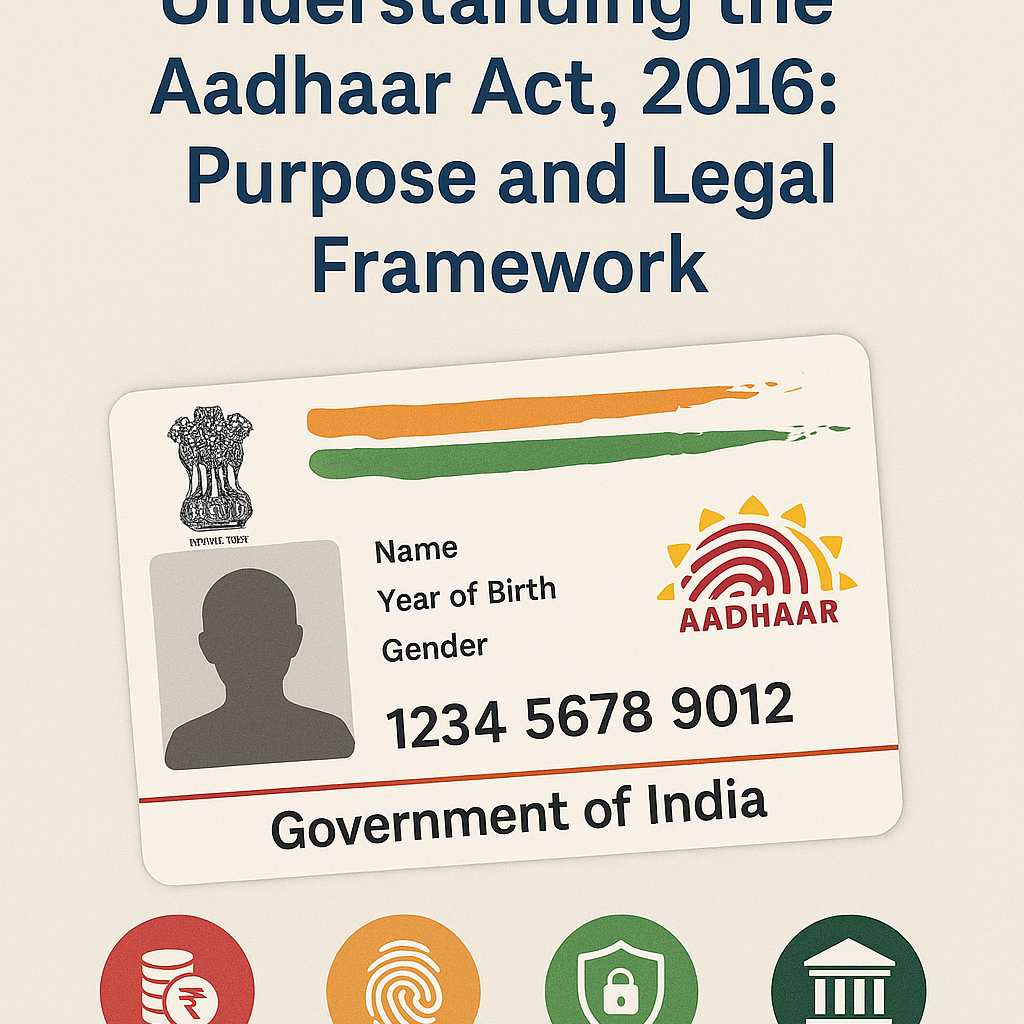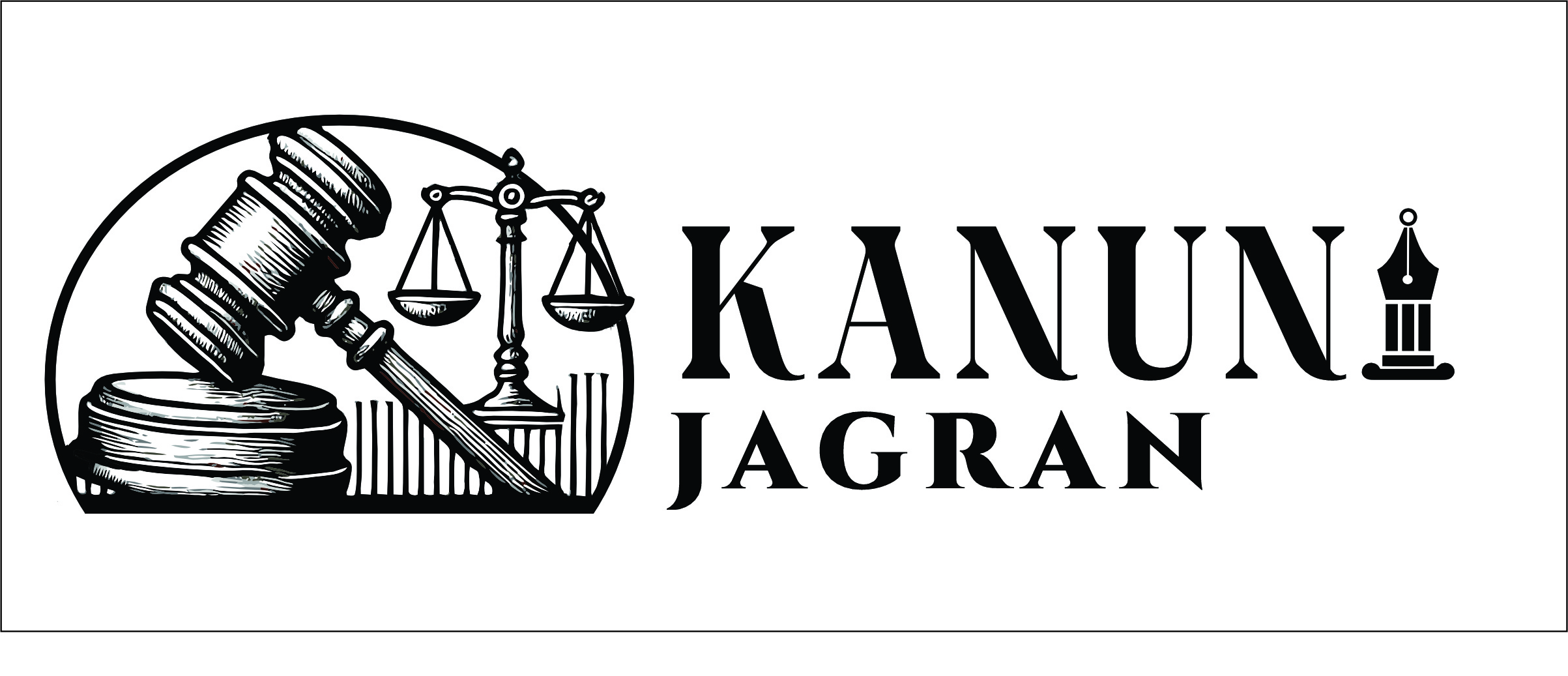
How Aadhaar Helps in Targeted Delivery of Subsidies and Services 🇮🇳
“Sabka Saath, Sabka Vikas” — this slogan truly comes alive through Aadhaar, India’s unique identity system that ensures every rupee of public money reaches the right person.
🌐 Introduction
Imagine a country with over 1.4 billion people. How do you ensure that welfare benefits — from gas subsidies to scholarships — reach only the rightful beneficiaries, not middlemen or fake accounts?
Before 2016, India faced a massive problem of leakages, duplication, and corruption in government schemes. Subsidies meant for the poor were often diverted elsewhere.
That’s when Aadhaar, backed by the Aadhaar (Targeted Delivery of Financial and Other Subsidies, Benefits and Services) Act, 2016, revolutionized the process.
In this blog, let’s understand in simple terms how Aadhaar enables targeted delivery, how it has improved governance, and what real-life changes it has brought to people’s lives.
🏛️ The Legal Backbone: Aadhaar Act, 2016
Under Section 7 of the Aadhaar Act, the government can use Aadhaar authentication for delivering subsidies, benefits, or services funded from the Consolidated Fund of India.
In simple words — Aadhaar helps the government verify that the person claiming a subsidy is genuine.
This has made welfare delivery transparent, efficient, and inclusive.
🎯 The Concept of Targeted Delivery
What is “Targeted Delivery”?
It means ensuring that government benefits — such as LPG subsidies, pensions, scholarships, or food grains — reach only those who are eligible.
Earlier, fake identities and ghost beneficiaries inflated welfare lists. Aadhaar eliminates these issues through biometric verification and centralized identity authentication.
Why It Matters
Every rupee saved from leakages means more funds for genuine beneficiaries — and that’s how Aadhaar strengthens the social welfare net.
🔄 How Aadhaar Enables Direct Benefit Transfer (DBT)
The Direct Benefit Transfer (DBT) system is one of the most successful Aadhaar-based initiatives.
Here’s how it works:
- Beneficiary Identification: The person’s Aadhaar is linked to their bank account.
- Verification: When the government releases funds, Aadhaar authentication confirms the person’s identity.
- Transfer: The subsidy is directly credited to the person’s Aadhaar-linked bank account — no middlemen involved!
Example: LPG Subsidy (PAHAL Scheme)
Before Aadhaar, lakhs of fake LPG connections existed. With Aadhaar linkage, duplicate and inactive accounts were eliminated. As a result, the government saved over ₹14,000 crore annually — money that now benefits genuine households.
💡 Real-Life Example: Empowering Rural Women
Consider Rekha Devi, a widow from Jharkhand, who used to rely on intermediaries for her old-age pension. Payments were often delayed or partially stolen.
After Aadhaar-based DBT was introduced, Rekha started receiving her pension directly in her Aadhaar-linked Jan Dhan account. She can now withdraw it using her fingerprint at the local banking correspondent center.
No forms, no bribes, no waiting — just empowerment.
🔐 Ensuring Transparency and Accountability
Aadhaar authentication ensures that every transaction — whether it’s a scholarship payment or LPG refill — leaves a digital trace.
- No duplication: One person, one Aadhaar.
- No fake beneficiaries: Biometric verification prevents fraud.
- Instant verification: Service providers can authenticate identity in seconds.
This transparency has helped government departments maintain clean beneficiary databases and improve public trust.
📊 Impact Across Major Welfare Schemes
| Scheme | Purpose | Role of Aadhaar | Benefit |
|---|---|---|---|
| PAHAL (LPG Subsidy) | LPG subsidy | Prevented duplicate connections | Saved ₹14,000+ crore annually |
| MGNREGA | Rural employment wages | Biometric attendance & payment | Reduced ghost workers |
| PM Kisan | Farmer income support | Aadhaar-verified farmers | Eliminated ineligible claims |
| National Social Assistance Programme | Pensions for elderly/widows | Direct transfer to accounts | Timely payments |
| Scholarships | Student financial aid | Aadhaar-linked disbursal | Transparent and efficient |
⚙️ Technology Behind It All
Aadhaar uses a secure digital infrastructure that connects:
- UIDAI servers (for authentication)
- Banks and payment systems (for DBT)
- Government databases (for eligibility verification)
This network ensures that when you place your fingerprint or enter an OTP, your identity is verified in real time.
All communications are encrypted, and no sensitive biometric data is stored or shared.
⚖️ Case Study: Aadhaar and PDS (Public Distribution System)
Before Aadhaar, India’s Public Distribution System was plagued by fake ration cards. States like Andhra Pradesh and Jharkhand adopted Aadhaar-based authentication for ration distribution.
Results:
- Over 10 million fake ration cards eliminated.
- Food grains reached genuine families faster.
- Transparency increased due to real-time monitoring.
The success of these pilot programs encouraged other states to adopt Aadhaar in welfare delivery.
💬 Voices from the Ground
“Earlier, I never knew when my pension would come. Now, I get an SMS when it’s credited to my account. Aadhaar has made life easier.”
— Kamla Bai, 68, Madhya Pradesh
“The best part is, I don’t have to go to the bank. I can withdraw money at the shop using my fingerprint.”
— Ramesh Kumar, Farmer, Uttar Pradesh
These stories reflect the everyday impact of Aadhaar on common citizens.
🚧 Challenges and the Way Forward
No system is perfect. Aadhaar-based welfare delivery also faces challenges:
- Authentication Failures: Fingerprint mismatches due to age or manual labor.
- Connectivity Issues: Rural areas may face internet outages during biometric verification.
- Data Privacy Concerns: Citizens worry about misuse of personal data.
Government Measures
- Introducing iris and face authentication as alternatives.
- Establishing strict data protection norms under the Digital Personal Data Protection Act, 2023.
- Setting up grievance redressal cells for failed authentications.
Continuous improvement ensures Aadhaar remains inclusive and reliable.
🌱 The Broader Impact: Building Digital India
Aadhaar has become the backbone of India’s Digital Public Infrastructure (DPI).
Today, it powers:
- UPI payments (authentication through Aadhaar-based e-KYC)
- Digital health records (ABHA)
- Education and employment verification systems
Aadhaar has evolved from being just an identity card to a platform for empowerment.
❓ FAQs on Aadhaar-Based Service Delivery
Q1. Can I still get government benefits if I don’t have Aadhaar?
Yes. No one can be denied benefits for not having Aadhaar. Alternative identity proofs must be accepted.
Q2. How can I link my Aadhaar with my bank account?
You can link it online through internet banking or by visiting your branch.
Q3. Is my Aadhaar data safe during authentication?
Yes. All Aadhaar transactions are encrypted, and UIDAI ensures no biometric data is shared with third parties.
Q4. Can Aadhaar be used for private sector services?
Yes, but only with the individual’s consent and following UIDAI’s data privacy rules.
Q5. What happens if my Aadhaar authentication fails?
You can use alternate methods like OTP or face authentication, or visit the nearest Aadhaar Seva Kendra for assistance.
